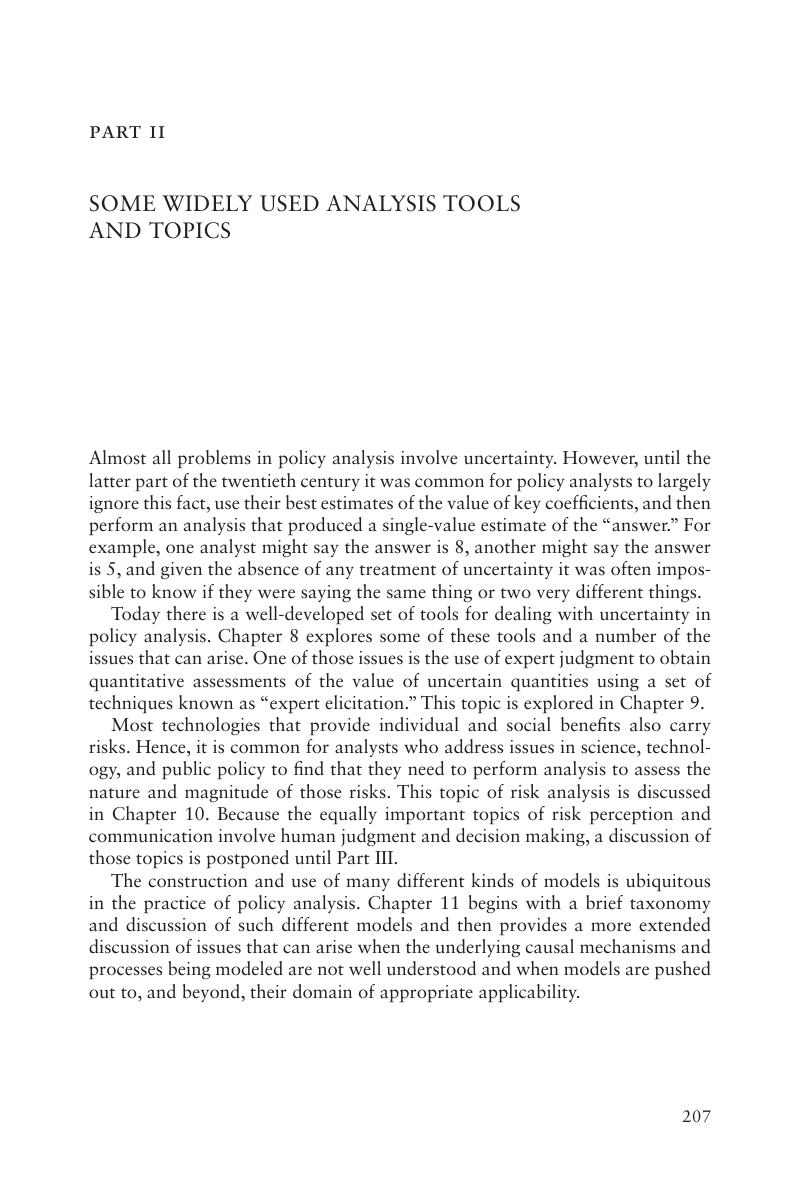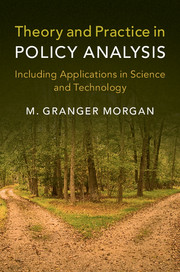Book contents
- Theory and Practice in Policy Analysis
- Theory and Practice in Policy Analysis
- Copyright page
- Contents
- Preface
- Acknowledgments
- 1 Policy Analysis: An Overview
- Part I Making Decisions that Maximize Utility
- Part II Some Widely Used Analysis Tools and Topics
- Part III How Individuals and Organizations Actually Make Decisions
- Part IV The Policy Process and S&T Policy (Mainly) in the United States
- Book part
- Index
- References
Part II - Some Widely Used Analysis Tools and Topics
Published online by Cambridge University Press: 24 August 2017
- Theory and Practice in Policy Analysis
- Theory and Practice in Policy Analysis
- Copyright page
- Contents
- Preface
- Acknowledgments
- 1 Policy Analysis: An Overview
- Part I Making Decisions that Maximize Utility
- Part II Some Widely Used Analysis Tools and Topics
- Part III How Individuals and Organizations Actually Make Decisions
- Part IV The Policy Process and S&T Policy (Mainly) in the United States
- Book part
- Index
- References
Summary

- Type
- Chapter
- Information
- Theory and Practice in Policy AnalysisIncluding Applications in Science and Technology, pp. 207 - 342Publisher: Cambridge University PressPrint publication year: 2017



